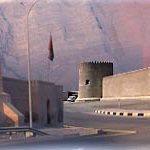Australia Universities
Australia Universities
University
Australian National University
University of Canberra
Website
www.anu.edu.au
www.canberra.edu.au
.
University
University of Sydney
University of New South Wales
Macquarie University
University of Technology, Sydney
University of Western Sydney
University of Wollongong
Charles Sturt University
University of New England
University of Newcastle
Southern Cross University
Australian Catholic University
Website
www.usyd.edu.au
www.unsw.edu.au
www.mq.edu.au
www.uts.edu.au
www.uws.edu.au
www.uow.edu.au
www.csu.edu.au
www.une.edu.au
www.newcastle.edu.au
www.scu.edu.au
www.acu.edu.au
.
| University | Website |
| University of Melbourne | www.unimelb.edu.au |
| Monash University | www.monash.edu.au |
| RMIT University | www.rmit.edu.au |
| La Trobe University | www.latrobe.edu.au |
| Deakin University | www.deakin.edu.au |
| Victoria University | www.vu.edu.au |
| Swinburne University of Technology | www.swinburne.edu.au |
| Federation University | www.federation.edu.au |
.
| University | Website |
| The University of Queensland | www.uq.edu.au |
| Griffith University | www.griffith.edu.au |
| Bond University | www.bond.edu.au |
| Queensland University of Technology | www.qut.edu.au |
| Central Queensland University | www.cqu.edu.au |
| University of Southern Queensland | www.usq.edu.au |
| James Cook University | www.jcu.edu.au |
| University of the Sunshine Coast | www.usc.edu.au |
.
| University | Website |
| University of Western Australia | www.uwa.edu.au |
| Curtin University of Technology | www.curtin.edu.au |
| Edith Cowan University | www.ecu.edu.au |
| Murdoch University | www.murdoch.edu.au |
.
| University | Website |
| University of Adelaide | www.adelaide.edu.au |
| University of South Australia | www.unisa.edu.au |
| Flinders University | www.flinders.edu.au |
| Carnegie Mellon University | www.australia.cmu.edu.com |
.
| University | Website |
| University of Tasmania | www.utas.edu.au |
Entry Requirements
Entry Requirements for Bachelor Degree
Entry Requirements for Master Degree
Obtaining a bachelor's degree from a recognized university.-
Entry Requirements for Doctoral Degree
The research proposal should be accompanied by a curriculum vitae (CV) and two recommendation letters from individuals, one of whom is an academic lecture.
The Application Procedure for Admission
Apply Online
Apply Through Higher Education Services Offices
Offer of Admission
Children Study
Student Visa
The basic requirements for obtaining a study visa in Australia include the following:
https://immi.homeaffairs.gov.au/check-twice-submit-once/student-visa
https://immi.homeaffairs.gov.au/form-listing/forms/1229.pdf
http://www.immi.gov.au/e_visa/index.htm
https://immi.homeaffairs.gov.au/check-twice-submit-once/student-visa
Preparing for Travel
Pre-Departure Arrangements
Important Documents
A translated and certified copy of the children's birth certificates and their academic certificates.
What to Bring with You? ؟
Traveling to Australia
On the Plane
https://www.abf.gov.au/entering-leaving-australia/files/ipc-sample-english.pdf
Airport Procedures
Inside the Airport
Customs Clearance
https://www.abf.gov.au/entering-and-leaving-australia/can-you-bring-it-in/list-of-items
Lost Luggage
Transportation from the Airport
Health Insurance
| Website | Company Name |
| http://www.allianzcare.com.au/en.html | Allianz |
| www.medibank.com.au | Medibank |
Facts About Australia
Historical Overview
Geographical Location
Population
Climate
| Season | Month |
| Summer | Dec-Feb |
| Autumn | Mar-May |
| Winter | Jun-Aug |
| Spring | Sep-Nov |
www.studyqueensland.qld.edu.au
Cost of Living
Accommodation and Transportation
Accommodation
Homestays with Local Families
Student Dormitories or Halls of Residence
Single rooms with shared bathroom facilities for single sexes.
Single rooms with private bathrooms.
A large room with two or more beds, typically shared by at most two students.
Renting a House or Apartment
www.domain.com.au
Public Transportation
Trains
Trams
Buses
Taxicabs
Tips and Guidelines
حضور المحاضرات:
التأمين الصحي:
.






